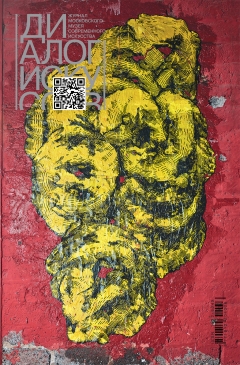|
|
Alexander Ostrogorsky’s utterly subjective selection of eight young Russian architectural bureaus each offering their own vision for post-post-socialist architecture.
In the 1990s and 2000s architecture withdrew from all dialogues connected with art and culture. In fact this withdrawal had already begun to take place during Soviet times when creative processes in this field were entirely subjected to the goals of industrial house-building, with only a few buildings, such as theatres, museums and ministry buildings, able to claim a certain degree of creative autonomy. Later architecture became totally subjugated by the market (with all the implications entailed by the use of the word “market” in our country). In her research “Mushrooms, Mutants and Others: the architecture of the Luzhkov era”, Daria Paramonova, Head of the Strelka Architects bureau, demonstrated how a marriage of low level professional culture and the new realities – ideological ones and those connected with the market – brought to life staggering architectural phenomena. Moscow and other cities became crowded with shopping malls bristling with steel appendages, quaint housing estates, pygmy kiosks, Hong-Kong-like skyscrapers, clumsy replicas of churches demolished by Bolsheviks but dear to the new authorities.
This bestiary also featured animals produced by people exhibiting not only a penchant for business but also creative ambitions. Many of them the researcher has classified as unica – “having emerged in opposition to late soviet modernism, the unica suggested new principles based primarily on materialistic values which were adopted more readily than other values of Western society,” writes Daria. Paramonova offers an insightful list of formal means such as “exaggerated architectural irony, experiments with bright colors and distorted forms,” “creation of a modern appearance by means of new finishing materials such as, for example, blue mirrored glass,” “dynamic compositions, arrangements of abstract forms.” Most of the characteristics speak of the interest in formal experimentation liberated after Soviet stagnation. However exposure to the results of these experiments brings a feeling of emptiness. What are they for?
The winds of spirit blow where they want to. It seems that they are now returning to our country’s architects – to substantiate this I have selected eight bureaus: Nowadays, Сitizenstudio, Fas(t), Kosmos, Klienewelt Architecten, Megabudka, Le Atelier, Sa Lab. We can hardly recognize in them a Russian Frank Gehry or a new Norman Foster. If each of the bureaus has more than two realized projects this is already something. But it is not scale that makes up the virtue of architecture – look at Moscow’s gargantuan residential complexes. If we want architecture to be meaningful it is not scale and complexity that should come to the forefront but rather a certain kind of thoroughness that includes attention to both the whole and the details; an architectural work must have a connection with the history of architecture, with its “genius loci”, as well as self-consistency and autonomy. This is what separates this architecture from that of the preceding period.




